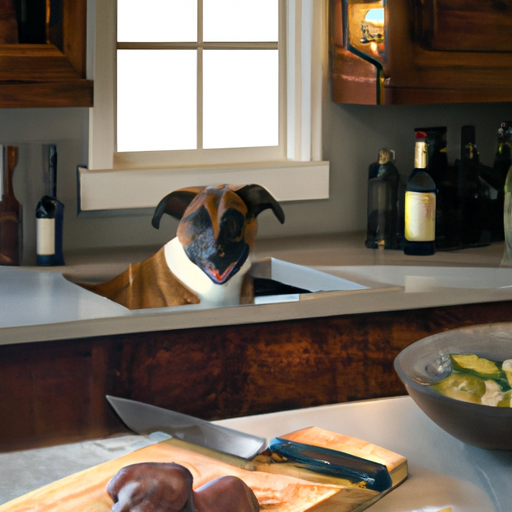As a dog owner, you might often find yourself wondering about the best food to give your furry friend. Are you looking for a new recipe? Have you considered lamb? Yes, lamb! It’s not just for us humans, but can be a delectable treat for your canine companion as well. In this guide, we will explore “How to Cook Lamb for Dogs”.
Why Feed Your Dog Lamb
Lamb is an excellent source of protein, which is essential for your dog’s body functions. It also provides essential amino acids and is rich in vitamins and minerals such as Iron, Zinc, Selenium and Vitamin B12. These nutrients help maintain your dog’s immune system, contribute to red blood cell production, and support overall health.
In addition to these benefits, lamb is known to be a ‘novel protein’ – a protein source that your dog hasn’t been exposed to. This can be beneficial for dogs with food allergies or sensitivities, as it’s less likely to trigger an allergic reaction.
Choosing the Right Lamb
When it comes to choosing lamb for your dog, you should consider the following factors:
- Quality: Always opt for high-quality, fresh lamb. Avoid processed meats as they may contain preservatives and additives that are harmful to your dog.
- Lean cuts: Choose lean cuts of lamb to avoid excess fat, which can lead to obesity and other health issues in dogs.
- Boneless: Ensure the lamb is boneless, as cooked bones can splinter and cause harm to your dog.
Preparing the Lamb
Now that we’ve chosen the right lamb, let’s move onto the next step – preparing it. Here’s a simple yet delicious recipe you can try:
-
Ingredients
-
1 pound of lean, boneless lamb
- 2 cups of vegetables (carrots, peas, etc.)
-
1 tablespoon of fish oil (optional)
-
Procedure
-
Cut the lamb into small, bite-sized pieces suitable for your dog’s size.
- Boil the lamb in a large pot of water until it’s thoroughly cooked.
- Steam the vegetables until they’re soft.
- Once everything is cooked, mix the lamb and vegetables together and allow it to cool.
- Add fish oil for extra omega-3 benefits.
Serving the Lamb
When serving lamb to your dog, ensure it’s at room temperature to avoid any risk of burns. Start by introducing small quantities, especially if it’s the first time your dog is having lamb.
Monitor your dog for any allergic reactions or changes in behavior. If everything seems fine, you can gradually increase the portion size. Remember to balance the lamb with other food items in your dog’s diet, as too much of one type of food can lead to nutritional imbalances.
Frequently Asked Questions
Q: Can all dogs eat lamb?
A: Most dogs can eat lamb, but if your dog has specific dietary restrictions or health conditions, consult with your vet first.
Q: How often should I feed my dog lamb?
A: Lamb should be a part of a balanced diet, not the entire meal plan. Feeding your dog lamb once or twice a week should be sufficient.
Q: What other meats can I feed my dog?
A: Dogs can eat a variety of meats including chicken, beef, turkey, and fish. Always ensure the meat is cooked thoroughly and is of high quality.
Q: Can I feed my dog raw lamb?
A: Raw diets have potential risks such as bacteria contamination. It’s recommended to cook the lamb before feeding it to your dog.
In conclusion, lamb can be a healthy and tasty addition to your dog’s diet. By selecting high-quality lamb, preparing it properly, and serving it in moderation, you can provide your dog with a meal they’ll love while also boosting their overall health.



